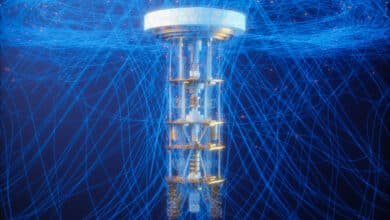All Post-Quantum, PQC Posts
-
Post-Quantum, PQC, Quantum Security
Trust Now, Forge Later (TNFL) – The Overlooked Quantum Threat
What is "Trust Now, Forge Later" (TNFL)? Most discussions about quantum computing threats focus on “Harvest Now, Decrypt Later” (HNDL) - the idea that adversaries can collect encrypted data today and store it, hoping a future quantum computer will break the encryption and expose sensitive information. This risk is very real, especially for data that needs to remain confidential for decades (think government secrets, health…
Read More » -
Post-Quantum, PQC, Quantum Security

Quantum Readiness Is Not (Just) a Vendor Problem
In the recent IBM's “Secure the Post-Quantum Future” report 62% of executives admitted that their organization is waiting for vendors to make them quantum‑safe. In other words, they expect cloud providers, network equipment makers and software vendors to embed post‑quantum cryptography (PQC) so that internal teams can simply apply updates. This mindset is understandable - modern enterprises depend on vast supply chains - but it…
Read More » -
Post-Quantum, PQC, Quantum Security
Quantum-Readiness / PQC Full Program Description (Telecom Example)
Preparing a large telecom (or any enterprise) for the post-quantum cryptography era is a massive, multi-faceted undertaking, but it is achievable with foresight, resources, and commitment. We’ve seen that it involves much more than just installing new algorithms - it’s about transforming an organization’s approach to cryptography across potentially thousands of applications and devices, under uncertain timelines and in coordination with many external players. In…
Read More » -
Q-Day
Forget Q-Day Predictions – Regulators, Insurers, Investors, Clients Are Your New Quantum Clock
Whether you personally believe Q-Day will come in 5 years or 50, the world around you isn’t taking chances - and neither can you. As a CISO, you’re now being implicitly (and sometimes explicitly) told by every corner of your ecosystem that quantum preparedness is mandatory. Regulators demand it via hard deadlines. Key clients and partners demand it in contracts and RFPs. Insurers will soon…
Read More » -
Post-Quantum, PQC, Quantum Security
Marin’s Law on Crypto-Agility: Adaptability Determines Survivability
Thesis: Migration time to safer cryptography is inversely proportional to an organization’s crypto-agility. Formally: Let A denote an organization’s crypto-agility (0 ≤ A ≤ 1) and Y the wall-clock time required to replace a cryptographic primitive across all in-scope systems. Then Y ≈ K ⁄ A for some complexity constant K. As A → 0, Y → ∞. Corollary: Raising A today shortens all future…
Read More » -
Q-Day
How You, Too, Can Predict Q-Day (Without the Hype)
For three decades, Q-Day has been “just a few years away.” I want to show you how to make your own informed prediction on when Q-Day will arrive. Counting physical qubits by itself is misleading. To break RSA you need error‑corrected logical qubits, long and reliable operation depth, and enough throughput to finish within an attack‑relevant time window.
Read More » -
Post-Quantum, PQC, Quantum Security
CRQC Readiness Benchmark vs. Quantum Threat Tracker (QTT)
I will try and compare my proposed CRQC Readiness Benchmark with QTT, highlighting fundamental differences in methodology, assumptions, and philosophy, all in an effort to clarify how each approach informs our understanding of the looming “Q-Day.” The goal is to articulate why my benchmark and QTT produce different outlooks (2030s vs. 2050s for RSA-2048), and how both can be used together to guide post-quantum readiness.
Read More » -
Q-Day
The Trouble with Quantum Computing and Q-Day Predictions
The trouble with quantum computing predictions so far has been that too many have been more speculation than science, more influenced by bias than by balanced analysis. We have the tools and knowledge to do better. By embracing a data-driven, scenario-based approach, we can turn timeline forecasting from a source of confusion into a valuable planning aid.
Read More »






